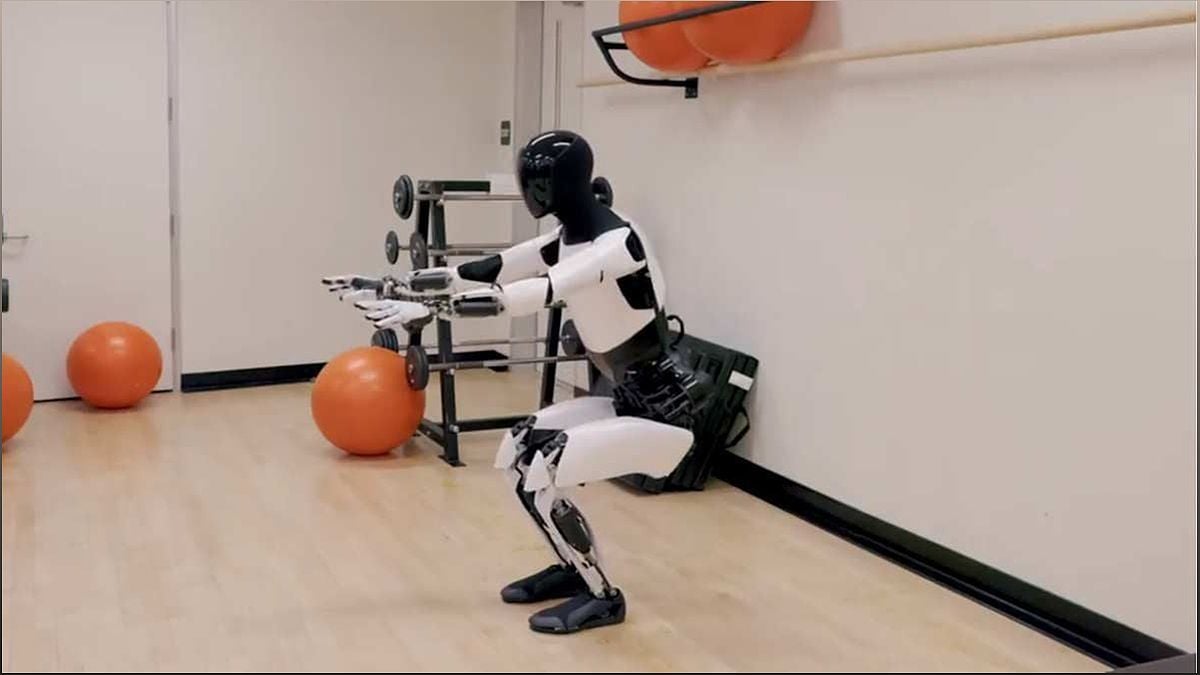Introducing Optimus 2.0: Tesla’s Next Generation Robot
Experience the remarkable evolution of Tesla’s robot with Optimus 2.0. This next-generation marvel showcases enhanced speed, precision, and functionality, revolutionizing the world of robotics. Witness its impressive capabilities and imagine the possibilities it holds for the future.
The Evolution of Tesla Bot
Tesla has unveiled the next generation of its groundbreaking robot, Optimus 2.0, showcasing significant improvements over its predecessor. This cutting-edge creation features Tesla-designed actuators and sensors, a 2-Dof actuated neck, integrated electronics and harnessing, and a 30% increase in walk speed. With a weight reduction of 22 lbs., the Optimus 2.0 is lighter and more agile, paving the way for enhanced performance and functionality.

The Tesla Bot’s advancements also include foot force/torque sensing, articulated toe sections, and human foot geometry, ensuring smooth and natural movements. Its brand-new hands, equipped with tactile sensing on all fingers, allow for delicate object handling. With faster and more versatile 11-DoF hands, the Tesla Bot showcases human-like precision and dexterity.
With these groundbreaking enhancements, the Tesla Bot has made remarkable progress in just a short period. From its initial prototype, known as ‘Bumblebee,’ to the first-generation Tesla Bot, and now Optimus 2.0, the evolution of this robot is truly awe-inspiring.
Unleashing the Power of Optimus 2.0
Optimus 2.0 is not just a robot; it is a marvel of engineering and design. This next-generation Tesla Bot demonstrates precise arm movements and hand gestures, showcasing a level of precision that closely resembles human capabilities. Its weight reduction of 22 lbs. contributes to increased efficiency, allowing for smoother and faster movements.
With a 30% increase in walk speed, the Optimus 2.0 can navigate its surroundings with ease. It can even perform a 90-degree squat, showcasing its agility and flexibility. The robot’s hands are equipped with tactile sensing on all fingers, enabling it to handle delicate objects like eggs. When interacting with objects, pressure points on the fingers light up, further demonstrating its advanced capabilities.
Moreover, the Tesla Bot has expanded its repertoire of movements, now capable of performing yoga poses and other precise motions. From squats to maintaining balance, this robot has mastered the art of human-like movements.
Looking ahead, the possibilities for the Tesla Bot are endless. Future iterations may include the ability to jump, climb stairs, and carry heavier items. The progress made in just two years is remarkable, raising intriguing questions about the potential applications of the Tesla Bot in various industries, including automotive.
Insights from the Tesla AI Team
Milan Kovac, a prominent member of the Tesla AI Team, sheds light on the incredible capabilities and resilience of the new generation Tesla Bot. With their expertise and dedication, the team has pushed the boundaries of robotics, creating a robot that closely mimics human movements and interactions.
According to Kovac, the advancements in Optimus 2.0 are a result of Tesla’s relentless pursuit of innovation and excellence. The integration of Tesla-designed actuators and sensors, along with the improved walk speed and weight reduction, has transformed the Tesla Bot into a highly efficient and versatile machine.
With Kovac’s insights, it becomes evident that the Tesla AI Team’s vision for the future of robotics is ambitious and groundbreaking. The collaboration between human ingenuity and cutting-edge technology has brought us one step closer to a world where robots can seamlessly integrate into our daily lives.
Imagining the Future with Tesla Bot
The advancements in the Tesla Bot have sparked curiosity and excitement about its potential applications. With its remarkable capabilities, the Tesla Bot could revolutionize various industries, particularly the automotive sector.
Imagine a future where Tesla Bots assist in manufacturing processes, performing intricate tasks with precision and efficiency. These robots could also play a crucial role in hazardous environments, minimizing risks for human workers.
Furthermore, the Tesla Bot’s ability to navigate different terrains, climb stairs, and carry heavy loads opens up possibilities in logistics and delivery services. With their human-like dexterity, these robots could become valuable assets in fulfilling complex tasks.
As we delve into the future, it’s essential to consider the ethical implications and ensure that these advancements are used responsibly. The Tesla Bot represents a significant leap forward in robotics, and its potential impact on society is both exciting and thought-provoking.
